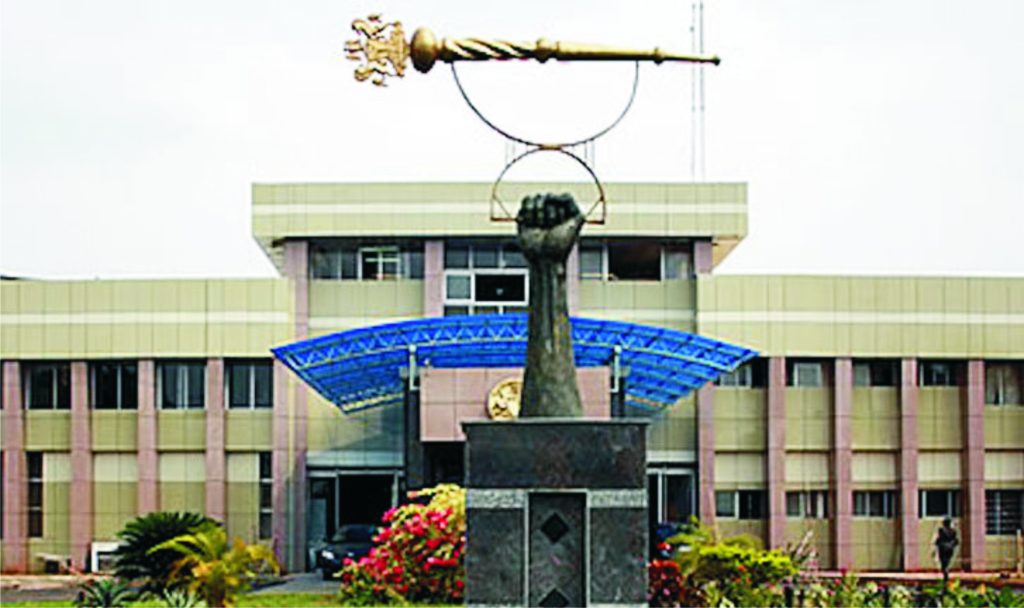The Benue State House of Assembly has vehemently defended its resolution calling for the removal of Chief Judge Justice Maurice Ikpambese, rejecting criticism from the Nigerian Bar Association (NBA) as misinformed and constitutionally unsound. The Assembly maintains that its actions are firmly grounded in Section 292(1)(a)(ii) of the 1999 Constitution, which explicitly empowers the state legislative body to recommend the removal of a Chief Judge to the Governor, provided the recommendation enjoys two-thirds majority support within the House. The Assembly insists that the NBA, particularly representatives Afam Osigwe (SAN) and Dr. Mobolaji Ojibara, prematurely condemned the Assembly’s decision without a thorough understanding of the constitutional provisions governing such matters.
The core of the Assembly’s argument revolves around the distinction between removing a judge from office entirely and removing a judge from the specific position of Chief Judge. Majority Leader Santer Sateer emphasized that the House’s resolution focused solely on removing Justice Ikpambese from the Chief Judge position, not from his judicial role altogether. He underscored the Assembly’s adherence to the constitutional framework, arguing that their actions were not only lawful but also aligned with the best interests of Benue State, which is their primary constituency. The Assembly maintains that any action regarding Justice Ikpambese’s status as a judge falls under the jurisdiction of the National Judicial Council (NJC), a separate and distinct process from the Assembly’s recommendation regarding the Chief Judge position.
The Benue State House of Assembly further clarified its position by highlighting the specific constitutional provision that guided its decision. Section 292(1)(a)(ii) of the 1999 Constitution explicitly empowers the state assembly to initiate the removal of a Chief Judge, Grand Kadi, or President of a Customary Court of Appeal. The Assembly argues that this provision unequivocally grants them the authority to recommend the removal of Justice Ikpambese as Chief Judge, a recommendation that must be acted upon by the Governor if it meets the two-thirds majority threshold within the House. This emphasis on the specific constitutional provision underscores the Assembly’s assertion that their actions were well within the bounds of the law and not an overreach of their powers.
The controversy stems from the Assembly’s resolution directing Governor Hyacinth Alia to remove Justice Ikpambese from his position as Chief Judge. The NBA criticized this resolution, arguing that it overstepped the Assembly’s authority. However, the Assembly contends that the NBA’s criticism is based on a misinterpretation of the constitution and a failure to differentiate between removing a judge from office and removing a judge from a specific leadership role. This fundamental difference in interpretation forms the crux of the disagreement between the Benue State House of Assembly and the NBA. The Assembly further argues that the NBA’s criticism is premature and undermines the due process outlined in the constitution for handling such matters.
The Assembly’s insistence on the distinction between removing a judge and removing a Chief Judge highlights the nuances of judicial appointments and removals within the Nigerian legal system. The Chief Judge position is an administrative role within the judiciary, carrying specific responsibilities and authorities distinct from the general duties of a judge. While the NJC holds jurisdiction over the appointment and discipline of judges, including their removal from office for misconduct, the constitution explicitly grants the state assembly a role in the removal of a Chief Judge. This division of power ensures a system of checks and balances, where both the executive and legislative branches have a say in the leadership of the state judiciary, albeit through distinct mechanisms.
The clash between the Benue State House of Assembly and the NBA underscores the ongoing debate regarding the separation of powers and the respective roles of different branches of government in the appointment and removal of judicial officers. The Assembly’s robust defense of its actions highlights the complexities of navigating constitutional provisions and interpreting their practical implications. The emphasis on the distinction between removing a judge from office and removing a judge from a specific leadership position reveals the subtle yet significant differences in the procedures and authorities governing these actions. This case serves as a reminder of the importance of a thorough understanding of constitutional provisions and the potential ramifications of interpretations that deviate from the established legal framework. The Assembly’s pointed response to the NBA’s criticism highlights their firm belief that their actions were not only lawful but also essential for safeguarding the interests of Benue State and upholding the principles of due process enshrined within the Nigerian constitution.


